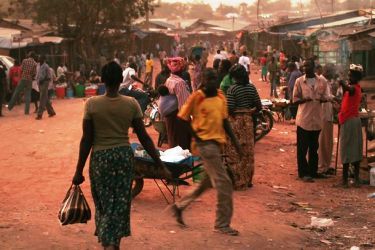South Sudan’s inflation jumps to nearly 80%
By Julius N. Uma
June 4, 2012 (JUBA) — South Sudanese will have to dig deeper into their
pockets, after statistics released by the country national bureau of
statistics indicate annual inflation increased to a staggering 80
percent in last month.

report, attributes the souring inflation in the midst of a struggling
economy to the unexpected rise in the cost of food and non-alcoholic
beverages.
“The South Sudan Consumer Price Index (CPI) increased by 29.5% from
April 2012 to May 2012. The increase was mainly driven by food and
non-Alcoholic beverages,” the report partly notes, adding that, the
CPI from April 2012 to May, increased by 23.1%, 33.1% and 22.5% in
Juba, Wau and Malakal respectively.
South Sudan seceded from the north in July last year, taking with it
nearly 75% of oil resources. However, a dispute over oil early this
year with neighboring Sudan forced South Sudan to shut down its oil
production, leaving the latter entirely dependent non-oil revenues.
Oil revenues initially accounted for nearly 98% of South Sudan’s annual budget.
David Chan, director of statistic at SSNBS attributes the sharp rise
in prices of food and non-alcoholic beverages to fuel scarcity in the
country. Fuel scarcity has in recent weeks hit South Sudan’s major
towns, with officials saying anticipating that the situation could
worsen in coming months.
“If we don’t resolve the current oil disputes with Khartoum, we are
likely to suffer from fuel scarcity, high food prices and inflation,”
David Deng, a special hire driver told Sudan Tribune as he queued in a
fuel station.
Early this year, a food security assessment conducted by the United
Nations showed 4.7 million people at risk of food insecurity in South
Sudan this year, with fears that at least a million of them could be
severely affected.
Already, a food security outlook update from Famine Early Warning
Systems Network (FEWSNET) indicates worrying food insecurity trends as
the rainy season sets in, with Northern Bahr el Ghazal, Jonglei and
Upper Nile states considered the worst affected regions.
Specifically of concern if the abnormal increase in Sorghum prices,
which reportedly range between 50 and 250 percent above the five-year
(2007-2011) average, and are significantly higher than prices at the
same time last year in most reference markets.
The increasing prices, according to the FEWSNET report, reflect the
ongoing impacts of last year’s below-average harvest, reduced sorghum
imports from Sudan due to the trade blockade imposed by the Government
of Sudan last year, and increased fuel costs.
“Transportation and fuel costs will increase further when the rains
begin in March/April, sustaining above-average prices through at least
the Outlook period,” it says.
In Upper Nile, for instance, the food crisis situation has reportedly
worsened as a result of the influx of refugees fleeing neighboring
Blue Nile State in Sudan, where conflict has persisted since September
2011.
According to the UN refugee agency (UNHCR), more than 81,000 refugees
are concentrated in Jammam (36,000 people) and Doro (over 47,000
people) camps in Jinmekda and Buong payams, respectively. However,
with a local population of 45,000 people in Maban County, according to
the 2008 South Sudan Census, refugees are nearly twice the size of the
host population, resulting in extreme competition over access to local
resources.
(ST)
